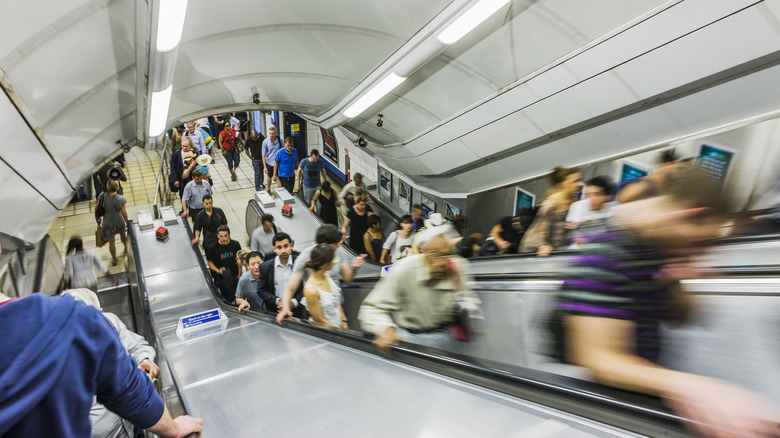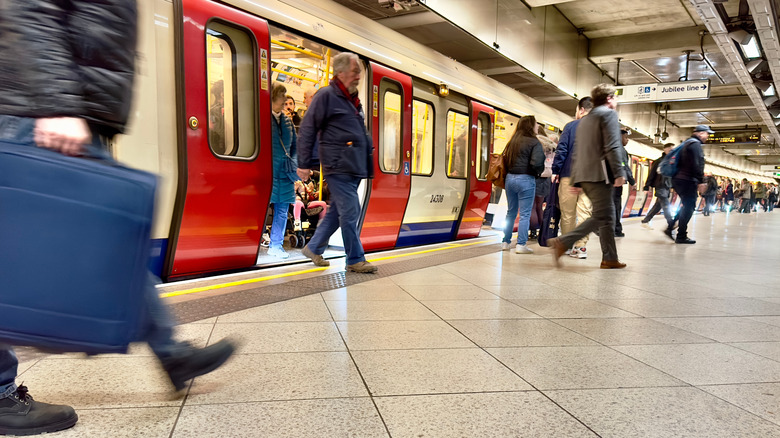Locals Hate A Common Mistake Tourists Make On London's Underground Transportation System
Of all the public transit systems in the world, few are as famous as the London Underground."The Tube" is the oldest subway in existence, dating back to 1863, and the full network of tunnels burrows about 250 miles under London's streets. The Underground is steeped in history as well: Stations were used as bomb shelters during World War II, at least five babies have been birthed down there, and the subterranean environment has bred a unique species of mosquito, among many other facts and legends. There's just something about its colorful signs, age-old platforms, and hint of Harry Potter that draws travelers to the Tube, and no visit to the United Kingdom's capital feels complete without it.
But as quaint and novel as the Underground may seem to visitors, Londoners generally see their subway system as a simple means of getting around, and they can get a bit impatient around starry-eyed tourists. Residents aren't asking much, but they do want you to observe one simple rule: When you passively ride the escalator, stay to the right. If you plan to walk up the escalator, go left. It's as simple as that, yet apparently, first-time visitors ignore this rule all the time, making Londoners absolutely batty.
Mind the gap ... and the escalator traffic
In almost every way, the Underground is your typical subway system. Commuters wait for trains, and passengers routinely give up their seats for expectant mothers and seniors. At rush hour, you're generally expected to make room and remove your backpack. Travel is usually pretty quiet, and strangers rarely strike up conversation. Stay behind the yellow line when the train approaches, and remember that people should exit the train before new passengers step aboard. If anything, Americans are sometimes startled by London's lack of "open container" laws, and although it's technically illegal, some riders still casually knock back a beer on the Tube.
But Londoners are pretty persnickety about their escalators. Note that the word for "escalator" is the same in British English (and isn't, like an elevator, known as a "lift"), and they otherwise function exactly like they do in the U.S. Most Americans also follow the same custom, using the left-side of the escalator steps as a kind of passing lane, so you don't have to adjust to the same directional switch as you do when driving. If you're planning to use the subway system a lot — which is a great idea, since it's efficient, affordable, and environmentally friendly — here's our ultimate guide to the London Underground.

